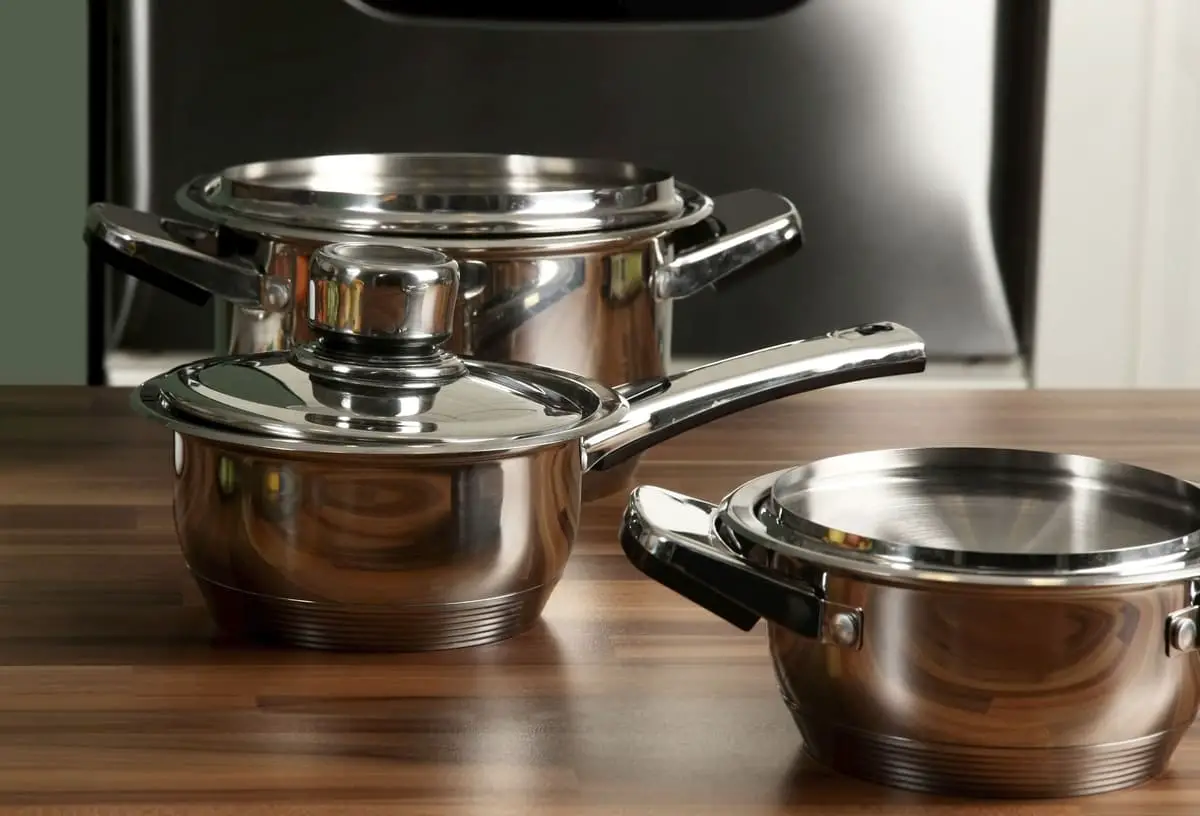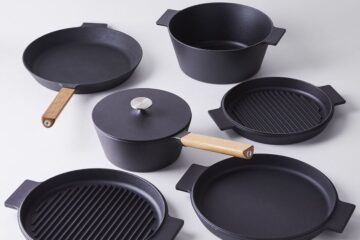Nonstick cookware has become increasingly popular in recent years due to its ease of use and convenience. However, concerns have been raised about the safety of nonstick cookware, particularly regarding the chemicals used in the coating.
As a general rule, nonstick pans are safe to use as long as they are not overheated. According to Nicole Papantoniou, director of the Kitchen Appliances and Culinary Innovations Lab at the Good Housekeeping Institute, nonstick pans should not be heated above 500 degrees Fahrenheit. Overheating can cause the nonstick coating to break down and release potentially harmful chemicals into the air. Additionally, nonstick pans that are scratched or damaged should be replaced, as the coating can flake off and be ingested with food.
While nonstick cookware is a convenient option, it may not necessarily be the safest. Health experts recommend using cookware made from materials such as stainless steel, cast iron, or ceramic, which do not contain potentially harmful chemicals. However, if one chooses to use nonstick cookware, it is important to follow the manufacturer’s instructions carefully and avoid overheating the pan.
What is Non Stick Cookware?
Non-stick cookware is a type of kitchen equipment that has a special coating that prevents food from sticking to its surface. This coating is typically made from a synthetic material called polytetrafluoroethylene (PTFE), also known as Teflon. The non-stick coating makes cooking and cleaning easier, as food slides off the surface more easily and requires less oil or butter to cook.
Non-stick cookware is available in a variety of forms, including frying pans, saucepans, griddles, and baking sheets. It is also available in a range of price points, from inexpensive options to high-end, professional-grade cookware.
While non-stick cookware is popular for its convenience and ease of use, there have been concerns about its safety. The non-stick coating can release toxic fumes when heated to high temperatures, which can be harmful to humans and pets. Additionally, the coating can scratch or chip over time, which can lead to ingestion of small particles of the coating.
To address these concerns, some manufacturers have developed non-stick coatings that are free of perfluorooctanoic acid (PFOA), a chemical that has been linked to health risks. Consumers can look for non-stick cookware that is labeled as PFOA-free to reduce their exposure to this chemical. It is also important to follow the manufacturer’s instructions for use and care of non-stick cookware, including avoiding high heat and using non-abrasive cleaning tools.
Potential Health Risks of Non Stick Cookware
Non-stick cookware is a popular choice for many households due to its convenience and ease of use. However, there are potential health risks associated with the use of non-stick cookware, particularly when it is not used or maintained properly.
Perfluorooctanoic Acid (PFOA)
Perfluorooctanoic Acid (PFOA) is a chemical used in the production of non-stick cookware. PFOA has been linked to various health problems, including cancer, thyroid disease, and developmental problems in children. Although PFOA has been phased out of production in the United States, it can still be found in older non-stick cookware.
Polytetrafluoroethylene (PTFE)
Polytetrafluoroethylene (PTFE) is the non-stick coating found on most non-stick cookware. When PTFE is heated to high temperatures, it can release toxic fumes that can cause flu-like symptoms in humans and can be fatal to birds. It is important to use non-stick cookware at low to medium temperatures and to avoid overheating the cookware.
Fluoropolymer Fumes
Fluoropolymer fumes are released when non-stick cookware is heated to high temperatures. These fumes can be harmful to humans and pets, causing flu-like symptoms and respiratory problems. It is important to use non-stick cookware in a well-ventilated area and to avoid overheating the cookware.
Alternatives to Non Stick Cookware
When it comes to cookware, non-stick options have been popular for years due to their convenience and ease of use. However, concerns over the safety of non-stick coatings have led many people to seek out alternative options. Here are a few alternatives to non-stick cookware:
Stainless Steel Cookware
Stainless steel is a popular alternative to non-stick cookware. It is durable, easy to clean, and does not contain any harmful chemicals. Stainless steel cookware is also great for searing and browning meats, as it can withstand high heat.
One downside to stainless steel cookware is that it is not non-stick, so food may stick to the surface if not properly oiled or seasoned. Additionally, stainless steel can be heavier than other types of cookware and may not heat as evenly.
Cast Iron Cookware
Cast iron cookware is another popular alternative to non-stick options. Cast iron is durable, retains heat well, and can be used on the stovetop or in the oven. Cast iron cookware can also be seasoned to create a natural non-stick surface.
One downside to cast iron cookware is that it requires more maintenance than other types of cookware. It should be seasoned regularly to maintain its non-stick surface, and it should not be washed with soap or soaked in water.
Ceramic Cookware
Ceramic cookware is a newer alternative to non-stick options. It is made from natural materials and does not contain any harmful chemicals. Ceramic cookware is also non-reactive, meaning it will not leach any unwanted flavors into your food.
One downside to ceramic cookware is that it can be more fragile than other types of cookware and may crack or chip if dropped. Additionally, ceramic cookware may not be as non-stick as other options and may require more oil or butter to prevent food from sticking.
Conclusion
Non-stick cookware has been a popular choice for many home cooks due to its convenience and ease of use. However, concerns have been raised about the safety of these types of pans, particularly when they are heated to high temperatures or scratched.
While there is no definitive answer on whether non-stick cookware is safe or not, there are some things to keep in mind when using these types of pans. Here are some key takeaways:
- Non-stick cookware is generally safe when used properly and not overheated. Always follow the manufacturer’s instructions for use and care.
- Avoid using metal utensils on non-stick pans, as they can scratch the surface and release potentially harmful chemicals.
- Consider using ceramic or stainless steel cookware as an alternative to non-stick pans.
- If you do choose to use non-stick cookware, replace it when it becomes scratched or damaged.
Overall, the best approach is to be informed and use common sense when using non-stick cookware. While there is no need to panic, it is important to be aware of the potential risks and take steps to minimize them.




